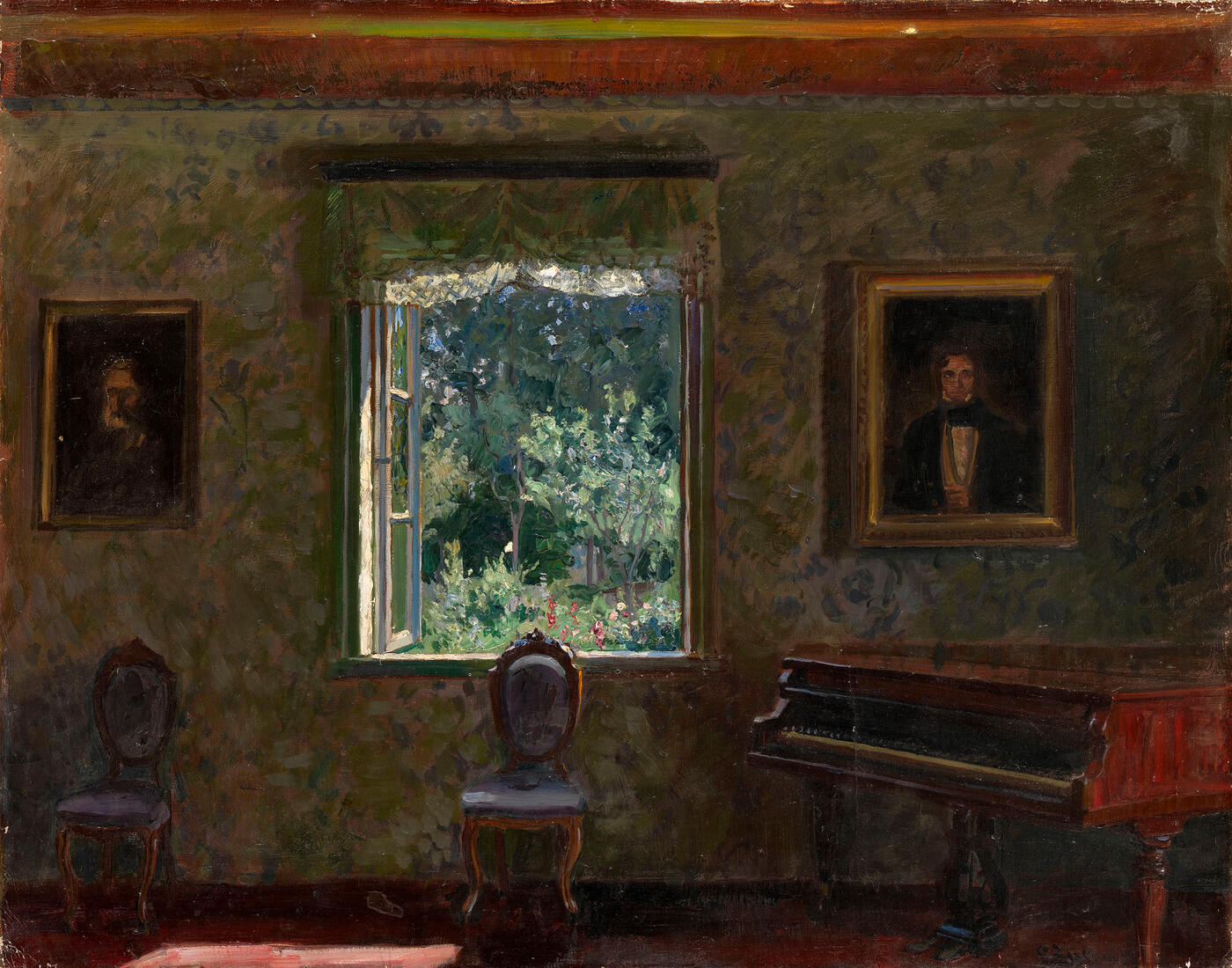MacDougall's Russian Art Auctions 1 December 2011
1 December 2011

33. ZHUKOVSKY, STANISLAV (1875-1944)
Interior. Sunny Day, signed, also further signed on the reverse.
Oil on canvas, 68 by 86.5 cm.
120,000-150,000 GBP
Authenticity of the work has been confirmed by the expert V. Petrov.
Exhibited: Exhibition of the Society of the Friends of Fine Arts, Krakow, 1936, No. 39 (label on the reverse).
The present work is without doubt one of the most cheerful and harmonious of the interiors that Zhukovsky painted at the peak of his creativity. The artist turned to this genre in the 1910s, when Petersburg society was particularly keenly feeling the worrying fragility and degeneration of the old way of life on country estates, a way of life fast disappearing under the unstoppable march of progress. In the words of Alexander Benois, the public was seized by “the habitual, cherry orchard state of mind”; and the very fact of turning to this genre, which had been popular in Russian art a century before Zhukovsky, betrays the artist’s readyprimed nostalgia and a fin de siècle feeling that was widespread in the early years of the 20th century.
Furthermore, Zhukovsky’s interiors are not museum halls but, rather, the familiar milieu in which his contemporaries lived. Thus the artist did not simply replicate the everyday objects around which their owners lived but, by implied parallels with the landscape, also conjured up the atmosphere of their emotional life. His particular talent consisted in his ability to convey the unbreakable link between the interior and the surrounding nature. The landscape, visible through the window (Zhukovsky’s favourite device, which he used in many variations), served as a singular kind of tuning fork with which to transmit the mood reigning in that interior, a mood that emerged either by the association of nature with the house, or by the contrast. Portraits on the wall also play an enormous part (they are usually ladies and gentlemen in early 19th-century dress), placed among the inanimate elements of the furnishings, like a living slice of an epoch that has now disappeared for ever.
In this case the emotional mood of the painting emanates from the ravishing expanse of the overgrown garden, flooded with bright summer sunshine. This light from the garden streams in through the open window of the house, filling it with the living breath of summer, with a particularly joyful sense of the freshness and purity of country life, and straight away, some new beauty is revealed in the modest furnishings, in the wooden floors and old-fashioned chairs, guardians of “the good old days”. It seems as if the inhabitants have just left the house for a moment, as evidenced by the wide open window, and the raised lid of the piano.
The strong colour accents do not look like random decoration, but instead mature within that rich colour environment, resulting in true colour harmony, thereby according with the emotional character of the painting.
Notes on symbols:
* Indicates 5% Import Duty Charge applies.
Ω Indicates 20% Import Duty Charge applies.
§ Indicates Artist's Resale Right applies.
† Indicates Standard VAT scheme applies, and the rate of 20% VAT will be charged on both hammer price and premium.